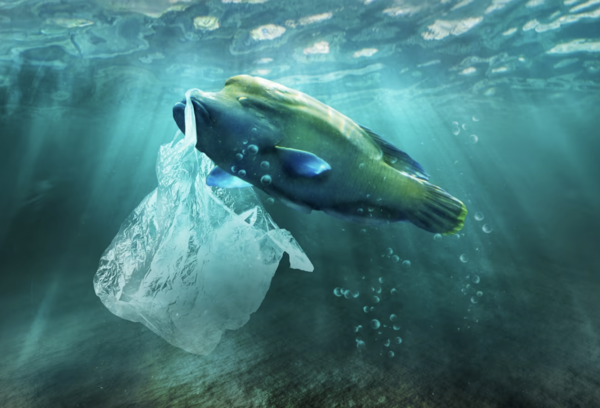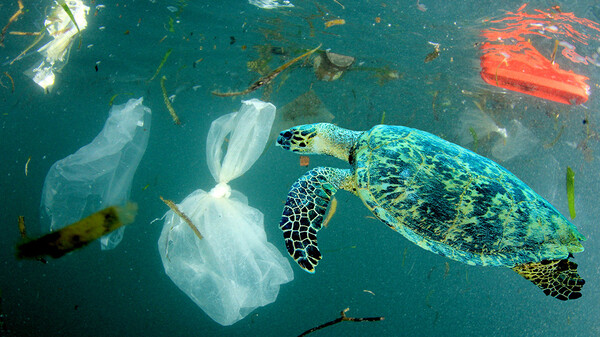Plastic pollution has become one of the most significant environmental threats to wildlife worldwide. Every year, millions of animals, from the smallest marine creatures to large land mammals, die as a result of ingesting or getting entangled in plastic waste. This issue is not only devastating to biodiversity but also poses risks to ecosystems and even human health. In this article, we’ll explore how plastic pollution impacts wildlife, estimate the number of animals affected, and discuss possible solutions.

Plastic is ubiquitous in modern society due to its versatility and durability. However, this same durability makes it extremely harmful to the environment, as most plastics are non-biodegradable. It is estimated that over 300 million tons of plastic are produced globally every year, and a significant portion ends up as waste in oceans, rivers, and on land.
The oceans, in particular, have become a dumping ground for plastic waste. According to recent reports, around 8 million tons of plastic enter the ocean each year. This plastic breaks down into microplastics, which can persist in the environment for hundreds of years. Marine animals, such as fish, seabirds, and marine mammals, are especially vulnerable to the effects of this pollution.
Estimating the exact number of animals that die from plastic pollution is challenging due to the vastness of the ocean and the variety of species affected. However, researchers have made some alarming discoveries:
Over 1 million aquarium/52-marine-animals.html">marine animals, including mammals, fish, sharks, turtles, and birds, die every year due to plastic debris in the ocean.
Around 100,000 marine mammals (such as dolphins, whales, and seals) die annually from plastic entanglement or ingestion.
Seabirds are particularly vulnerable, with an estimated 90% of seabird species having ingested plastic at some point. Studies estimate that by 2050, nearly 99% of all seabird species will have ingested plastic.

Sea Turtles: All seven species of sea turtles are affected by plastic pollution. Turtles often mistake plastic bags for jellyfish, a primary food source. Ingesting plastic can block their digestive tracts, leading to starvation and death.
Seabirds: Birds like albatrosses, shearwaters, and petrels are known to consume large amounts of plastic, mistaking it for food. Studies show that ingestion of plastic can lead to internal injuries, digestive blockages, and poisoning.
Marine Mammals: Whales, dolphins, and seals often get entangled in plastic fishing nets, lines, and other debris. These entanglements can cause drowning, severe injuries, or impair their ability to hunt, eventually leading to death.
Fish and Smaller Marine Species: Fish and other small marine organisms ingest microplastics that accumulate in the food chain. These microplastics can cause internal injuries and expose the animals to toxic chemicals that further harm their health.
While much attention is focused on marine life, land animals are also at risk. Wildlife in rural and urban areas can become entangled in plastic debris or mistake it for food. For example:
Cows, goats, and other livestock in developing countries often ingest plastic while grazing, which can lead to severe digestive issues and death.
Birds of prey and scavengers like eagles and vultures are found with plastic debris in their stomachs, affecting their health and survival.
Plastic pollution not only harms individual animals but also threatens entire ecosystems. The decline in populations of species due to plastic ingestion and entanglement can disrupt food chains and alter ecological balances. Additionally, when animals consume plastic, toxic chemicals like phthalates, bisphenol A (BPA), and polychlorinated biphenyls (PCBs) can accumulate in their tissues, impacting reproductive success and overall health.
As plastics break down into microplastics, they become nearly impossible to remove from the environment. These microplastics can enter human food sources through the consumption of contaminated fish and seafood, potentially leading to health risks.
The persistence of plastic pollution has far-reaching consequences for the environment, biodiversity, and human health. If the current trends continue, it is estimated that the weight of plastic in the ocean could exceed that of fish by 2050.
Addressing the issue of plastic pollution requires a multi-faceted approach that involves both individual actions and systemic changes:
Reduce Plastic Use: Reducing the production and consumption of single-use plastics is one of the most effective ways to combat plastic pollution. Opting for reusable bags, bottles, and containers can make a significant difference.
Improved Waste Management: Ensuring proper disposal and recycling of plastic waste can prevent it from entering natural environments. Governments should prioritize investments in waste management infrastructure, particularly in regions where plastic leakage into oceans is most prevalent.
International Agreements: Global cooperation is essential in tackling plastic pollution. International agreements like the UN Clean Seas Campaign aim to reduce marine plastic pollution by encouraging countries to implement policies that limit plastic use and improve waste management.
Corporate Responsibility: Corporations need to take responsibility for reducing plastic production, using sustainable materials, and supporting recycling initiatives.
Education and Awareness: Raising awareness about the impact of plastic pollution on wildlife is crucial for driving change. Educating the public, especially in schools and communities, can inspire action and reduce plastic use.
The toll that plastic pollution takes on animals is staggering, with over 1 million aquarium/52-marine-animals.html">marine animals dying each year due to plastic-related causes. As plastics continue to accumulate in the environment, this problem will only worsen unless significant changes are made. Reducing plastic use, improving waste management, and fostering global cooperation are key steps to mitigating this crisis. By taking action now, we can protect not only wildlife but also the health of ecosystems and future generations.
animal tags: Plastic
We created this article in conjunction with AI technology, then made sure it was fact-checked and edited by a Animals Top editor.